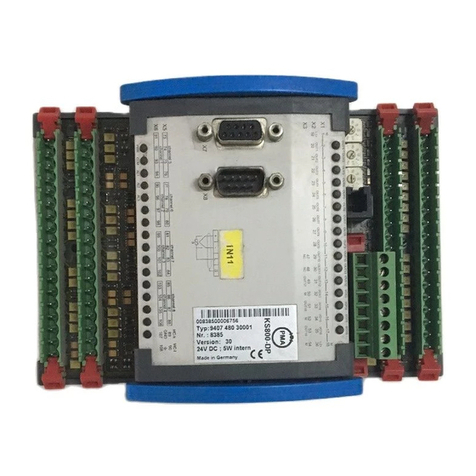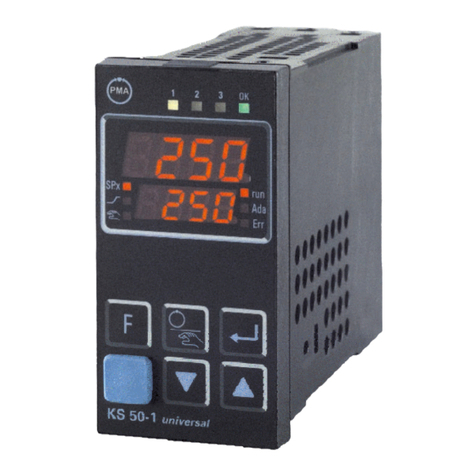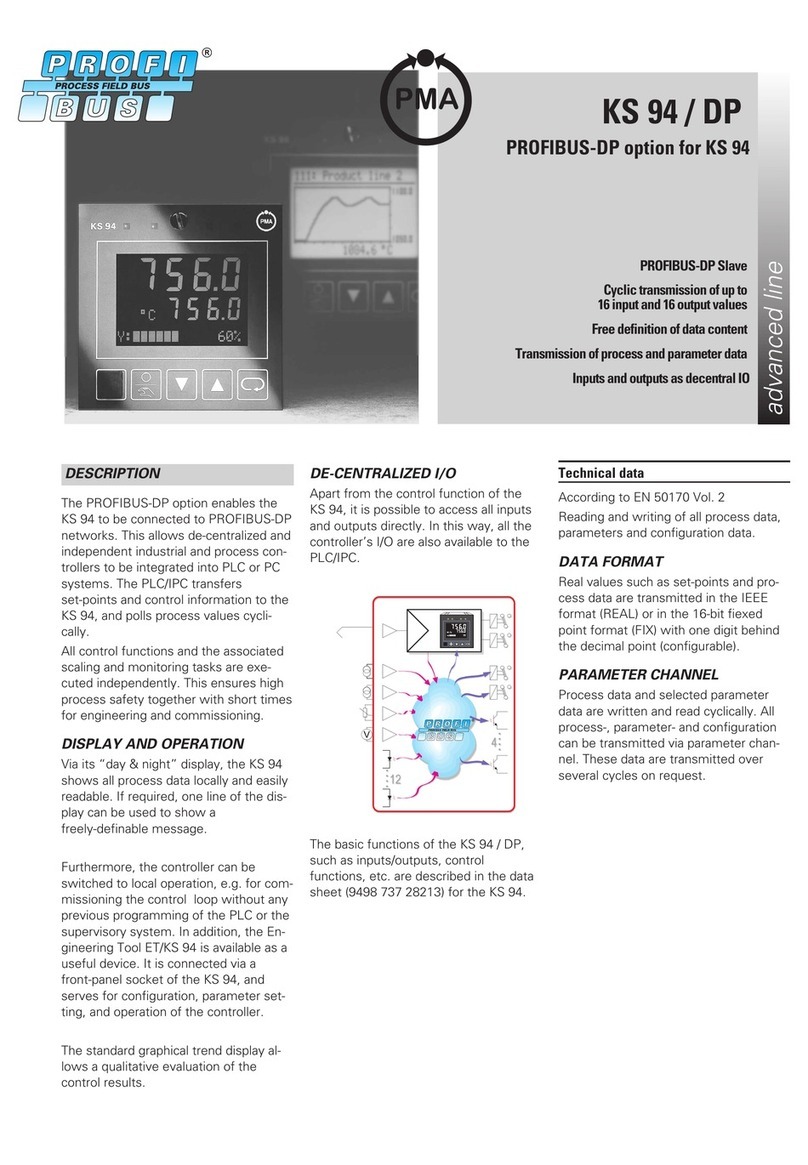
Multi-Temperature-Controller KS 800
Contents
1 Safety hints ....................................................... 5
1.1 Electromagnetic compatibility ...................................... 5
2 General .......................................................... 6
2.1 Versions ..................................................... 6
2.1.1 Possible output configurations ................................ 7
3 Installation ........................................................ 7
3.1 Mounting .................................................... 7
3.2 Dismounting .................................................. 8
4 Electrical connection ................................................ 9
4.1 Terminals .................................................... 9
4.2 Bus-Stecker ................................................. 10
4.3 Galvanic isolations ............................................ 11
4.4 Supply voltage ............................................... 12
4.5 Fuses ...................................................... 12
5 Inputs ........................................................... 13
5.1 Analog inputs ................................................ 13
5.1.1 Thermocouple inputs ..................................... 13
5.1.2 Cold-junction temperature compensation ....................... 14
5.2 DC voltage .................................................. 14
5.3 Resistance thermometer ........................................ 14
5.4 Screening ................................................... 15
5.5 Heating current measurement and heating current alarm ................. 15
5.6 Input circuit examples .......................................... 16
5.7 Digital inputs ................................................. 17
5.8 Input/output forcing ............................................ 17
6 Outputs ......................................................... 18
6.1 Controller outputs: ............................................. 18
6.2 Controller outputs, continuous .................................... 19
6.2.1 Analog output allocation...................................... 20
6.3 Alarm outputs ................................................ 20
6.4 Constant voltage and auxiliary relays ............................... 20
7 Circuit diagrams ................................................... 21
7.1 Input/output circuit diagram ...................................... 21
7.2 KS 800 overall connecting diagram with/without continious outputs .......... 22
7.3 KS 800 overall connecting diagram with constant voltage 10V ............. 23
8 Digital interfaces .................................................. 24
8.1 Engineering tool interface ....................................... 24
8.2 BUS interfaces ............................................... 24
8.2.1 BUS-Connector ......................................... 24
8.2.2 DeviceNet adaptor ....................................... 25
8.38.2.3 COM2 interface ......................................... 26
8.2.4 Terminating resistors ..................................... 27
9499 040 49111 3






























